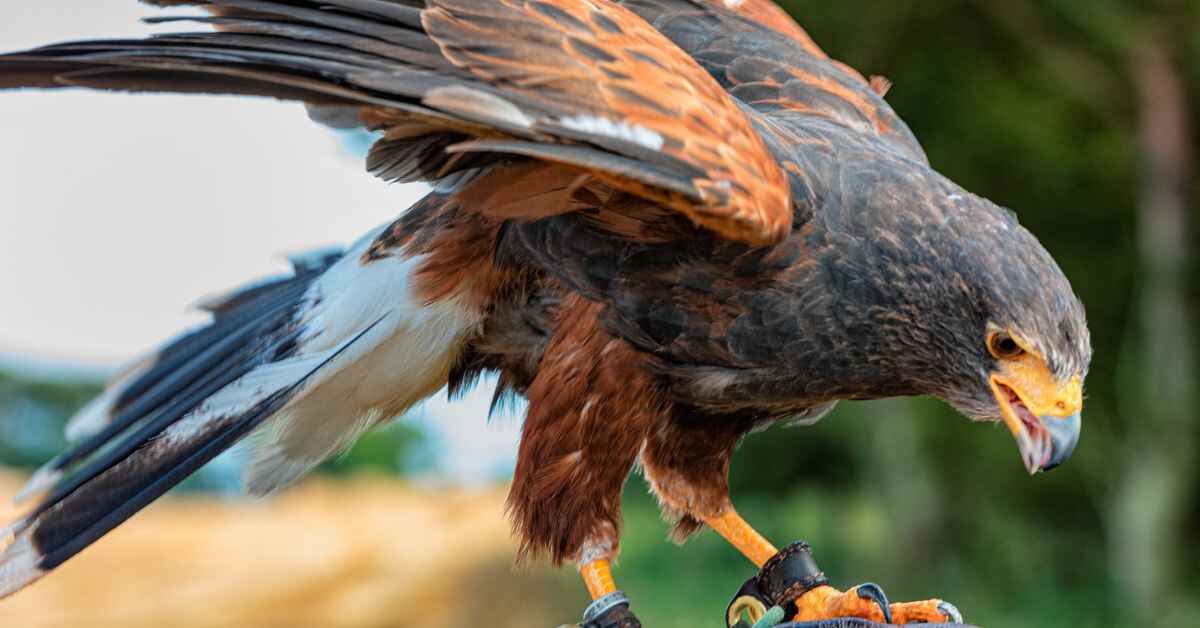Florida is home to a stunning variety of birds of prey, from majestic bald eagles to stealthy owls. These raptors play a vital role in maintaining the balance of the ecosystem by controlling populations of smaller animals. Exploring these incredible birds gives us a glimpse into the wild beauty of Florida’s natural world.
Imagine standing in the Everglades, spotting a bald eagle soaring overhead or an osprey diving for fish. The thrill of witnessing these powerful predators in action is something you won’t forget. Ready to discover more about Florida’s fierce and fascinating florida birds of prey?
Hawks
Hawks are medium-sized florida birds of prey known for their sharp talons and keen eyesight, which they use to hunt small mammals, birds, and insects. These raptors are found in a variety of habitats, including forests, grasslands, and even urban areas. Hawks are recognized by their broad wings and short tails, which allow them to maneuver skillfully through dense vegetation.
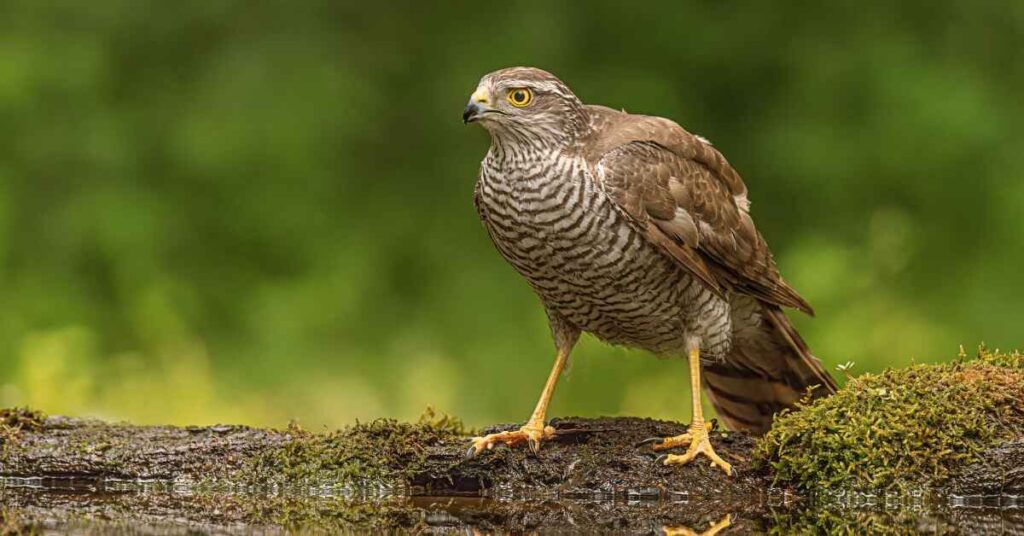
In the United States, the red-tailed hawk is one of the most common species, easily identified by its distinctive reddish-brown tail. Hawks play a crucial role in controlling rodent populations, helping to maintain ecological balance. They are also highly territorial and often return to the same nesting sites year after year.
| Feature | Details |
|---|---|
| Common Species | Red-tailed Hawk, Cooper’s Hawk, Sharp-shinned Hawk, Harris’s Hawk |
| Size | Medium-sized; typically 18-25 inches in length with a wingspan of 3.5-4.5 feet |
| Habitat | Diverse habitats including forests, grasslands, deserts, wetlands, and urban areas |
| Diet | Primarily small mammals (like rodents and rabbits), birds, reptiles, and insects |
| Hunting Techniques | Ambush predators; use sharp talons to catch prey; often hunt from a high perch or soar high in the sky before diving down |
| Nesting | Usually build nests in tall trees or cliffs; nests are often reused year after year; typically lay 1-5 eggs |
| Conservation Status | Most species are not endangered, but habitat loss and pesticide use can threaten local populations |
| Role in Ecosystem | Essential in controlling populations of small mammals and maintaining ecological balance |
| Distinctive Features | Sharp, curved beak; keen eyesight; broad wings and short tail for agile flight |
| Migration | Some species are migratory, traveling long distances between breeding and wintering grounds (e.g., the Swainson’s Hawk) |
This table provides an overview of key aspects of hawks, from their physical characteristics to their ecological role.
Also Read This Blog: Hawks in Colorado: Most Common Hawk Species
Osprey
Ospreys are large raptors known for their exceptional fishing skills, often seen diving feet-first into water to catch fish with their sharp talons. They have a distinctive appearance, with a white underbelly and a dark eye stripe that gives them a masked look. Ospreys are found near bodies of water, such as rivers, lakes, and coastal regions, where fish are abundant.
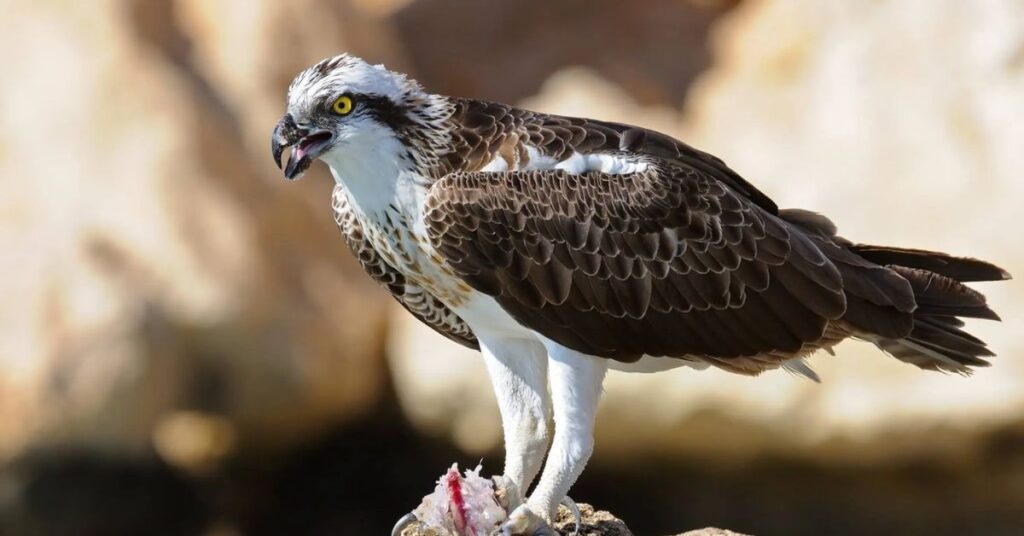
Unlike most raptors, ospreys have reversible outer toes that help them grip slippery fish securely. They build large nests, usually on top of tall structures like trees, poles, or platforms, and often return to the same nesting sites each year. Ospreys are found worldwide, making them one of the most widespread birds of prey.
| Feature | Details |
| Common Name | Osprey (Pandion haliaetus) |
| Size | Large raptor; typically 21-26 inches in length with a wingspan of 4.5-6 feet |
| Habitat | Found near bodies of water such as rivers, lakes, coastal areas, and wetlands |
| Diet | Almost exclusively fish; uses keen eyesight and powerful talons to catch fish |
| Hunting Techniques | Dives from great heights, plunging feet-first into water to grasp fish with reversible outer toes |
| Nesting | Builds large, bulky nests on tall structures like trees, poles, and specially-built platforms |
| Conservation Status | Not endangered; populations have recovered well after DDT ban, though habitat loss remains a concern |
| Role in Ecosystem | Important predator in aquatic ecosystems, helping to control fish populations |
| Distinctive Features | White underbelly, dark eye stripe, and a reversible outer toe; can close nostrils during dives |
| Migration | Migratory; many ospreys travel between breeding grounds in North America and wintering sites in Central and South America |
Vultures
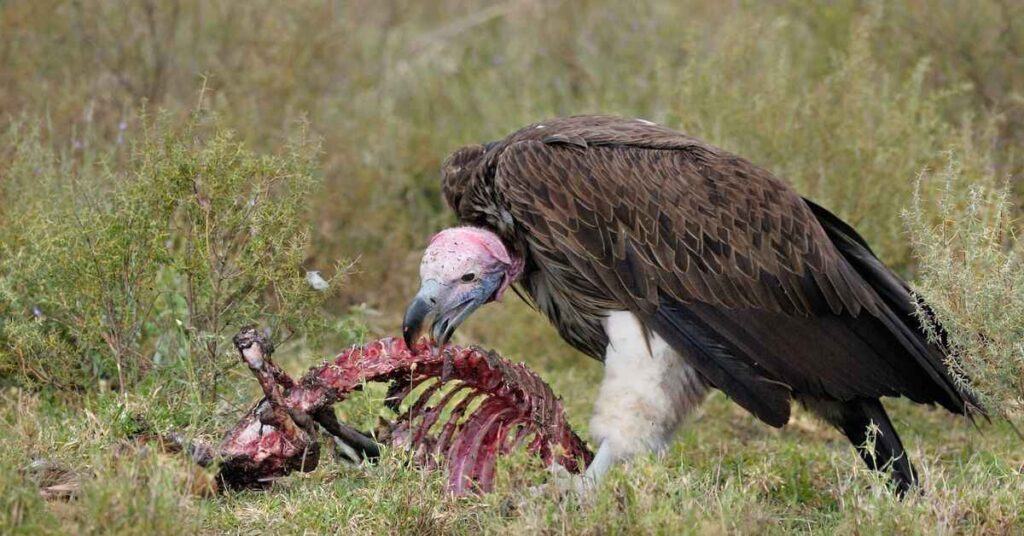
Vultures are large birds of prey known for their scavenging habits, feeding primarily on carrion, which helps prevent the spread of disease. They have strong, hooked beaks designed for tearing flesh, and a bald head that stays clean while feeding. Vultures are often seen soaring high in the sky, using thermal currents to cover vast areas in search of food.
In North America, the turkey vulture and the black vulture are the most common species. Turkey vultures have an exceptional sense of smell, allowing them to locate food from great distances, while black vultures rely more on sight and often follow turkey vultures to carrion. Vultures play a critical role in ecosystems by cleaning up dead animals, reducing the risk of disease outbreaks.
| Feature | Details |
| Common Species | Turkey Vulture (Cathartes aura), Black Vulture (Coragyps atratus), California Condor (Gymnogyps californianus) |
| Size | Medium to large; turkey vultures: 24-32 inches in length with a wingspan of 5.5-6 feet; black vultures are smaller |
| Habitat | Wide range of habitats including forests, deserts, grasslands, and urban areas |
| Diet | Primarily carrion (dead animals); some species may consume small mammals or reptiles occasionally |
| Hunting Techniques | Scavengers; use keen eyesight (and in some species, a strong sense of smell) to locate carrion |
| Nesting | Often nest in caves, cliffs, hollow trees, or abandoned buildings; typically lay 1-3 eggs |
| Conservation Status | Varies by species; some are threatened or endangered (e.g., California Condor), while others have stable populations |
| Role in Ecosystem | Critical scavengers that help clean up carrion, preventing the spread of diseases |
| Distinctive Features | Bald head (prevents bacteria from accumulating during feeding), broad wings, soaring flight |
| Migration | Some species are migratory (e.g., turkey vultures in North America), while others are resident year-round |
Owls
Owls are nocturnal birds of prey, recognized by their large, forward-facing eyes that give them excellent night vision. They have silent flight due to their specialized wing feathers, which help them hunt quietly in the dark. Owls primarily feed on small mammals, insects, and other birds, using their powerful talons to catch prey.
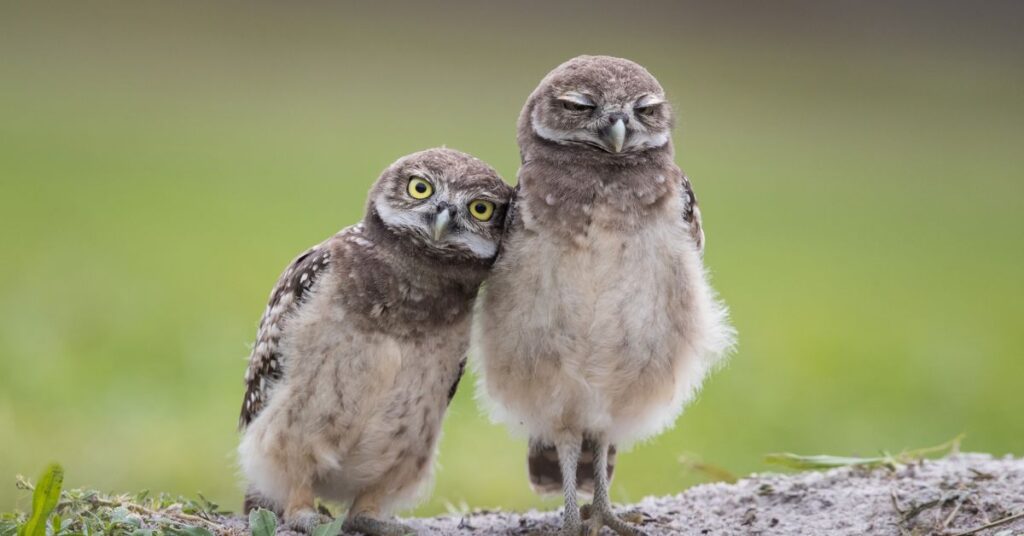
These birds are known for their distinctive hooting calls, which vary between species and serve as communication or territorial markers. Owls have a unique ability to rotate their heads up to 270 degrees, allowing them to see in almost all directions without moving their bodies. They are found in diverse habitats, from forests and grasslands to urban areas.
| Feature | Details |
| Common Species | Barn Owl (Tyto alba), Great Horned Owl (Bubo virginianus), Eastern Screech Owl (Megascops asio) |
| Size | Varies widely; from small species like the Elf Owl (6 inches) to large ones like the Great Horned Owl (up to 25 inches) |
| Habitat | Found in a range of habitats including forests, grasslands, deserts, and urban areas |
| Diet | Feeds on small mammals, insects, birds, and sometimes amphibians |
| Hunting Techniques | Hunts at night; uses silent flight and keen hearing to detect prey |
| Nesting | Nests in tree cavities, abandoned buildings, or on the ground; often uses old nests of other birds |
| Conservation Status | Varies by species; some are widespread and common while others are threatened or endangered |
| Role in Ecosystem | Controls populations of small animals and insects; important for maintaining ecological balance |
| Distinctive Features | Large forward-facing eyes, silent flight, and ability to rotate head significantly |
| Migration | Most owls are resident year-round, though some species may migrate or move locally depending on food availability |
Falcons
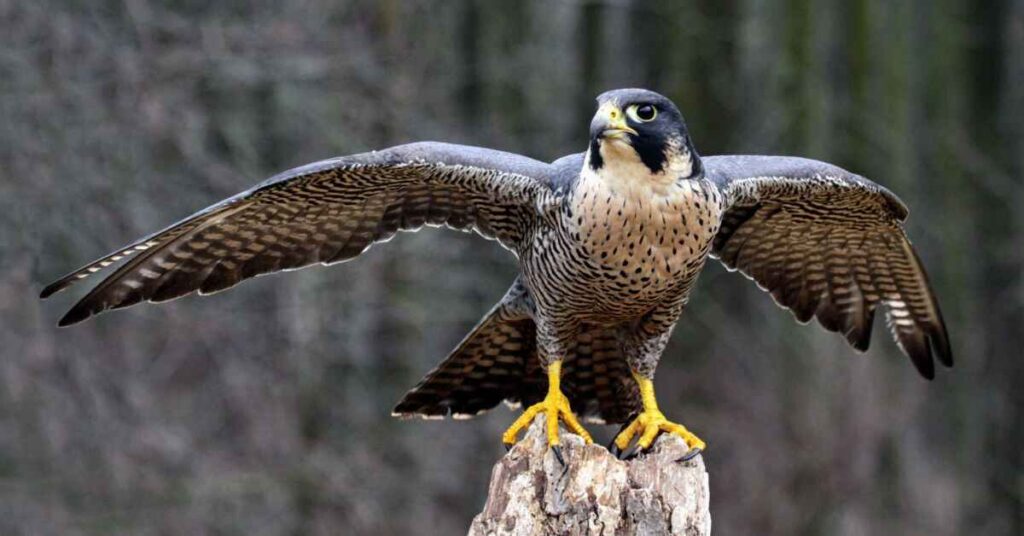
Falcons are fast and agile birds of prey known for their incredible speed, often reaching over 200 miles per hour in a stoop (dive) when hunting. They have sharp, hooked beaks and strong talons designed for catching and killing prey swiftly. Falcons primarily feed on other birds, insects, and small mammals.
These raptors are recognized for their pointed wings and tail feathers, which aid in their high-speed flight and maneuverability. Falcons are found in a variety of habitats including open landscapes, cliffs, and urban areas. They are skilled hunters and are often seen perched on high vantage points, scanning for prey.
| Feature | Details |
| Common Species | Peregrine Falcon (Falco peregrinus), American Kestrel (Falco sparverius), Merlin (Falco columbarius) |
| Size | Ranges from small (American Kestrel, about 8-12 inches) to large (Peregrine Falcon, up to 20 inches) |
| Habitat | Found in diverse environments including cliffs, open fields, forests, and urban areas |
| Diet | Primarily preys on other birds, insects, and small mammals |
| Hunting Techniques | Uses high-speed flight and precise aerial maneuvers to capture prey; often hunts in a stoop or dive |
| Nesting | Nests on cliffs, tall structures, or in trees; often uses old nests of other birds or artificial nest boxes |
| Conservation Status | Varies; some species like the Peregrine Falcon have recovered from endangerment due to conservation efforts |
| Role in Ecosystem | Controls populations of smaller birds and insects; helps maintain balance in various ecosystems |
| Distinctive Features | Pointed wings, long tail feathers, and a notch in the beak for killing prey |
| Migration | Many species are migratory, moving between breeding and wintering grounds |
Kites
Kites are graceful birds of prey known for their soaring flight and distinctive, forked tails. They primarily feed on small mammals, insects, and occasionally fish, using their sharp talons and beaks. Kites are often seen gliding high in the sky, where they use their keen eyesight to spot potential prey.
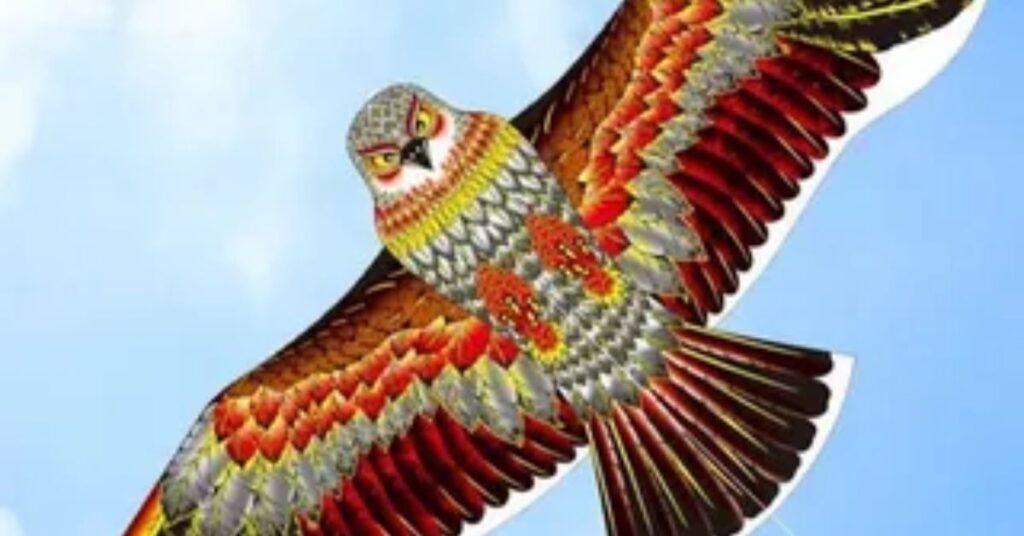
These raptors are recognized for their elegant, buoyant flight and can often be spotted in open woodlands, grasslands, and near water bodies. They build their nests high in trees or on tall structures, where they lay a small number of eggs. Kites play a vital role in controlling insect and rodent populations.
| Feature | Details |
| Common Species | Black Kite (Milvus migrans), Red Kite (Milvus milvus), Yellow-billed Kite (Milvus aegyptius) |
| Size | Medium-sized; typically 16-24 inches in length with a wingspan of 3.5-5 feet |
| Habitat | Prefers open landscapes, woodlands, and areas near water bodies |
| Diet | Feeds on small mammals, insects, and occasionally fish |
| Hunting Techniques | Soars high in the sky to spot prey; may use hovering flight to scan the ground |
| Nesting | Builds nests in trees or on tall structures; often uses sticks and leaves to construct their nests |
| Conservation Status | Generally stable, though some species may face local threats due to habitat loss |
| Role in Ecosystem | Helps control populations of insects and rodents; contributes to ecosystem health |
| Distinctive Features | Forked tail, long wings, and graceful soaring flight |
| Migration | Some species are migratory, traveling between breeding and wintering grounds |
Conservation and Future of Florida’s Raptors
Conservation efforts for Florida’s raptors focus on protecting their habitats and ensuring the safety of their nesting sites. Organizations and wildlife agencies work to restore natural habitats and monitor raptor populations to prevent declines. Conservation programs also address threats such as habitat destruction and pesticide use.
The future of Florida’s raptors looks hopeful due to ongoing conservation initiatives and public awareness campaigns. By continuing to protect their environments and enforce laws against poaching, we can support the recovery of these majestic birds. Efforts to educate the public about raptor conservation also play a crucial role in their long-term survival.
Florida birds of prey in flight
florida birds of prey are remarkable for their diverse flying techniques. The Bald Eagle soars majestically with its broad wingspan, while the Osprey performs impressive aerial dives to catch fish. The Red-shouldered Hawk uses agile flight patterns to navigate through dense forests in pursuit of prey.
Large birds of prey in Florida
Large birds of prey in Florida include the Bald Eagle, known for its impressive size and striking appearance. The Crested Caracara, with its unique crown of feathers, is also a notable raptor in the state. Lastly, the Swallow-tailed Kite, recognized for its long, forked tail and graceful flight, adds to Florida’s diverse raptor population.
| Bird Name | Size | Appearance | Habitat |
| Bald Eagle | 28-40 inches; wingspan 5.9-7.5 feet | White head and tail; dark brown body | Near large bodies of open water |
| Crested Caracara | 20-24 inches; wingspan 4.5-5.5 feet | Black body; white head with a crest | Open fields, savannas, and edges |
| Swallow-tailed Kite | 22-26 inches; wingspan 4.5-5.5 feet | Black and white with a long, forked tail | Forest edges and open woodlands |
This table provides a snapshot of the large raptors in Florida, emphasizing their size, appearance, and preferred habitats.
Florida birds of prey identification pictures
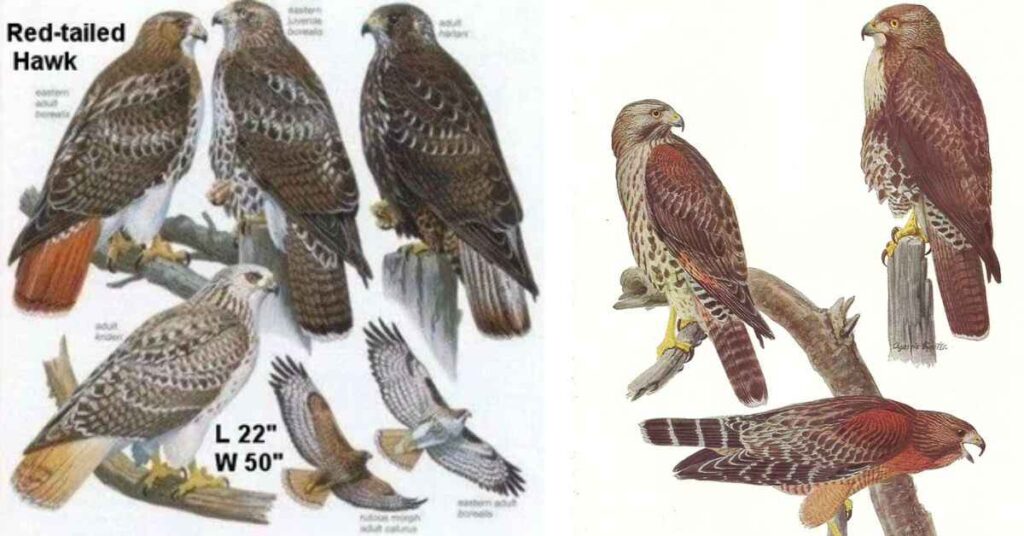
Identifying florida birds of prey often involves noting their distinctive markings and features. The Bald Eagle is recognized by its white head and tail feathers against a dark brown body. The Red-shouldered Hawk can be spotted by its bright rufous shoulders and barred underparts, while the Osprey is distinguished by its white underbelly and dark eye stripe.
Florida birds of prey size
florida birds of prey vary in size, with the Bald Eagle being one of the largest, featuring a wingspan of up to 7.5 feet. The Red-shouldered Hawk is smaller, with a wingspan of about 3.5 feet, while the Peregrine Falcon has a wingspan of around 3.5 feet as well, but is generally more compact in body size compared to the Bald Eagle.
Also Read This Blog: can birds eat grapes
Conclusion
Florida is home to a diverse array of florida birds of prey, including the majestic Bald Eagle and the agile Red-shouldered Hawk. These raptors play a vital role in the ecosystem by controlling populations of small animals and insects. The state also hosts the Osprey, known for its impressive fishing skills, and the Peregrine Falcon, famous for its speed. Together, these birds contribute to maintaining a balanced natural environment.

Welcom to https://birdsaboutinfo.com. Our content is for general information purposes. While we aim for accuracy, use it at your own risk. Seek professional advice for specific concerns. We’re not responsible for external links or the outcome of using our information. Some content may contain affiliate links. We may update this Disclaimer.
